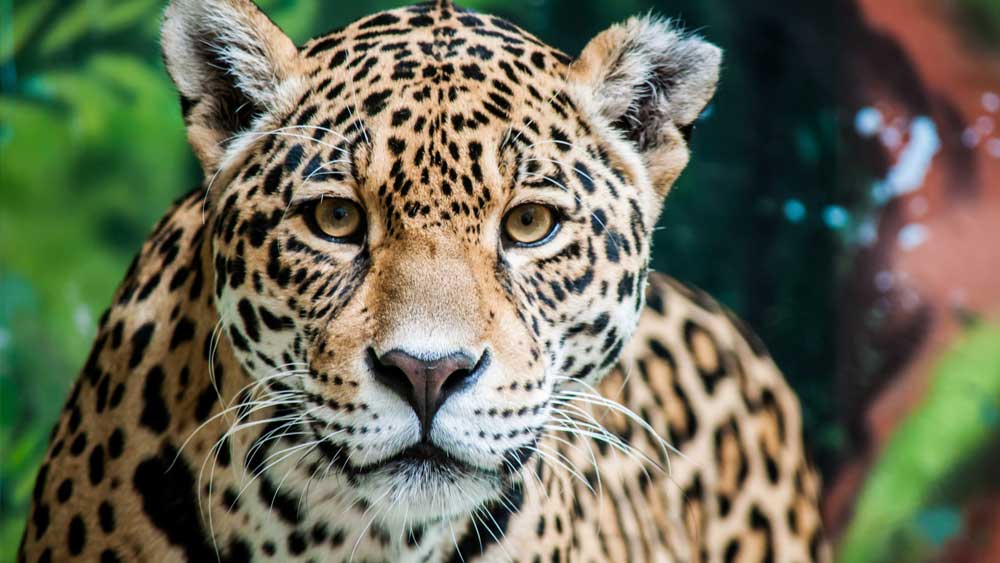It began with the U.S. Fish & Wildlife Service (a division of the Department of the Interior) asserting that the Endangered Species Act required protection of the jaguar (Panthera onca). They claimed that jungle-loving jaguars needed thousands of acres of hot, dry desert in New Mexico as “critical habitat.”2
A review of the statutory, regulatory, and evidentiary details of that complicated conservation litigation illustrates how convoluted a controversy can become, all in the name of defining the “critical habitat” of an “endangered species.”
Giving credit where credit is due, the court recognized that the world’s jaguars can interbreed, so they belong to the same species.2 Yet, non-jaguar members (e.g., tigers, lions, lynx, jaguarondi) of the feline kind can interbreed. So, the term “species” really should apply to all felines that descended from the original, created, feline kind. Accordingly, all jaguars of the world comprise, at best, only a “sub-species.”3
Therefore, the world’s population of jaguars (even if labeled a “sub-species” of the feline kind), as a whole, is neither endangered nor threatened, although they may be rare in America.2,3
One would expect the Endangered Species Act to protect animal species if their population predicament is perilous, but the ESA also decrees conservation protection to “sub-species” that are endangered, or at least threatened. However, “sub-species” are defined in the eye of the beholder. Some scientists (called “splitters”) recognize more sub-species than others (called “lumpers”).4
This taxonomic game is further complicated by geography with shifting boundaries. Animals don’t read range maps, so they don’t limit their migrations and dispersals to the same neighborhoods they once populated.2,3,4
So, part of determining whether thousands of acres of land would be stigmatized (and thus economically handicapped) by the label “critical habitat” of an endangered species, would pivot on whether certain tracts of land were actually “critical” in conservation value—plus whether those lands were actually used as “habitat” (even if “secondary” habitat) at the precise time when the jaguar was officially designated as an “endangered” species.
The best evidence, forensically speaking, would be reliable eyewitness testimony that jaguars were inhabiting those tracts of land.2,5 But no one had actually witnessed any jaguars in those lands, at the time when jaguars were officially listed as endangered.
In 2014, the Service published a final rule designating 764,207 acres in New Mexico and Arizona as critical jaguar habitat. Final Critical Habitat Designation, 79 Fed. Reg. at 12,572. The area was divided into six units. … Units 5 and 6 are the subject of this litigation. Unit 5 [“102,724 acres in the Peloncillo Mountains in Cochise County, Arizona, and Hidalgo County, New Mexico” and “ 7714 acres in the San Luis Mountains in Hidalgo County, New Mexico”]....
In assessing whether Units 5 and 6 were occupied by jaguars at the time they were listed, the [U.S. Fish & Wildlife] Service used data on undisputed Class I jaguar sightings [during] 1995, 1996, and 2006, but [there were no reliably witnessed] Class I sightings there between 1962 and the 1990s.2
Since jaguars are known to be shy, and cryptically camouflaged, the trial judge effectively excused the government agency’s lack of eyewitness proof that jaguars actually inhabited their so-called “habitat.”
Nonetheless, the Service found Units 5 and 6 “may have been occupied” by jaguars in 1972 because “[j]aguars were rare on the landscape and distributed over large, rugged areas,” “jaguars are cryptic and nocturnal by nature,” and “no survey effort was made to detect them in 1972.” [79 Fed. Reg. at 12,582]....
Based on this finding, the agency categorized Units 5 and 6 as “[o]ccupied at time of listing.”2
Based on this finding, the agency categorized Units 5 and 6 as “[o]ccupied at time of listing.”2
But that’s cheating! The government’s own regulations required that ESA regulatory land-grabs be grounded upon proof that the endangered species (or sub-species) be observed occupying (i.e., inhabiting) their so-called “critical habitat.”2
Biblical creationists should care about our planet—and for all God’s creatures who “fill the earth” in various niches and habitats.4
But when applying conservation laws as a matter of careful stewardship (of what is ultimately God’s property), is it asking too much to limit the use of terms like “critical habitat” to places where those relevant animals are known to actually inhabit? Sometimes the temptation to control other people’s property leads to designating habitats falsely so-called.6
References
1. Proverbs 25:14.
2. New Mexico Farm & Livestock Bureau v. U.S. Department of the Interior, 2020 WL 1265668 (10th Cir. 2020), reversing and remanding 2017 WL 4857444 (D. N.Mex. 2017).
3. Johnson, J. J. S. 2019. Norway's Redchat Defies Evolutionary Speciation. Acts & Facts. 48 (1): 21.
4. See Reference 2 in Johnson, J. J. S. 2012. Valuing God’s Variety. Acts & Facts. 41 (9): 8-9.
5. Johnson, James J. S. 2016. There's Nothing Like an Eyewitness. Acts & Facts. 45 (12): 20.
6. 1 Timothy 6:20.
*Dr. Johnson is Associate Professor of Apologetics and Chief Academic Officer at the Institute for Creation Research.













